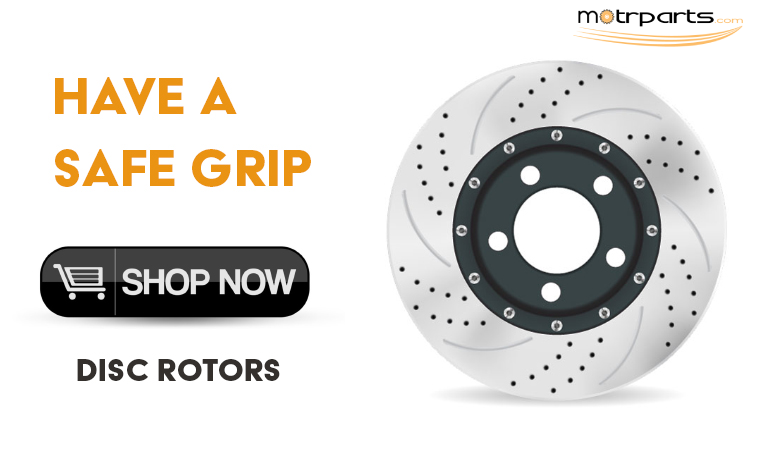Choosing the right disc rotor for your car is crucial for ensuring optimal braking performance and safety. The disc rotor, or brake disc, is a critical component of your vehicle’s braking system, responsible for converting kinetic energy into thermal energy through friction. With a myriad of options available in the market, selecting the ideal disc rotor can be a daunting task.
This guide aims to simplify the process, providing insights into the types of disc rotor, factors to consider, and tips for making an informed decision.
Understanding Disc Rotor
Disc rotor are the metal discs that connect to the wheels and work in tandem with brake pads to stop the vehicle. When you apply the brakes, the brake pads clamp onto the spinning rotors, creating the friction needed to slow down or stop the car. Rotors can vary in design, material, and size, each influencing performance, durability, and cost.
Types of Disc Rotor
Before delving into the specifics of choosing the perfect disc rotor, it’s essential to understand the different types available:
- Solid Rotors:
Solid rotors are basic, single-piece discs that offer standard braking performance. They are generally less expensive and suitable for everyday driving conditions. However, they may not dissipate heat as efficiently as other types, which can be a downside during intense driving. - Ventilated Rotors:
These rotors have a series of vents or channels between the two faces, allowing for better heat dissipation and improved cooling. Ventilated rotors are ideal for heavier vehicles or those frequently driven in high-performance scenarios. - Drilled Rotors:
Drilled rotors feature holes drilled through the disc to enhance heat dissipation and improve braking performance in wet conditions. The holes help evaporate water quickly, reducing the risk of brake fades. However, they may be prone to cracking under extreme stress. - Slotted Rotors:
Slotted rotors have shallow grooves on the surface that help evacuate gases, dirt, and debris, maintaining consistent friction. They are often used in performance vehicles and can provide superior stopping power, but may wear down brake pads faster. - Drilled and Slotted Rotors:
Combining the features of both drilled and slotted rotors, these offer enhanced cooling and debris removal. They are ideal for high-performance vehicles and track use, offering improved stopping power and heat dissipation. - Carbon-Ceramic Rotors:
Carbon-ceramic rotors are high-performance discs that provide excellent heat resistance and longevity. They are typically used in high-end sports cars and racing applications. While they offer superior performance, they are significantly more expensive.
Factors to Consider When Choosing Disc Rotor
Selecting the perfect disc rotor involves evaluating several factors that impact performance, durability, and compatibility with your vehicle:
- Driving Conditions:
Consider your driving habits and typical conditions. For everyday city driving, solid or ventilated rotors may suffice. However, if you often drive in mountainous areas or enjoy spirited driving, slotted or drilled rotors could be a better fit. - Vehicle Type:
The type of vehicle you own plays a crucial role in rotor selection. Heavier vehicles, such as trucks or SUVs, benefit from ventilated or slotted rotors that provide better heat dissipation. Sports cars might require drilled and slotted rotors for enhanced performance. - Budget:
Cost is a significant consideration when choosing disc rotor. While high-performance options like carbon-ceramic rotors offer superior performance, they come at a premium price. Determine your budget and find a balance between performance and affordability. - Material Quality:
The material used in rotor construction affects durability and performance. Cast iron is common for its affordability, while carbon ceramic offers unmatched performance. Ensure the rotors are made from high-quality materials for longevity. - Heat Dissipation:
Efficient heat dissipation prevents brake fade and maintains braking performance. Ventilated, drilled, and slotted rotors excel in cooling capabilities, making them suitable for intense driving scenarios. - Noise and Vibration:
Some rotors can produce noise or vibrations, affecting driving comfort. Choose rotors designed to minimize noise and provide a smooth braking experience. - Compatibility:
Ensure the chosen rotors are compatible with your vehicle’s make, model, and year. Consider consulting your vehicle’s manual or seeking advice from automotive experts. - Warranty and Brand Reputation:
Opt for rotors from reputable brands known for quality and reliability. Check for warranties that offer protection against manufacturing defects.
Installation and Maintenance
Once you’ve selected the perfect disc rotor, proper installation, and maintenance are key to ensuring optimal performance and longevity:
- Professional Installation:
While some may opt for DIY installation, professional installation ensures correct alignment and torque specifications. Improper installation can lead to uneven wear and reduced braking efficiency. - Regular Inspection:
Periodically inspect your disc rotor for signs of wear, warping, or damage. Regular inspections help catch issues early, preventing more extensive damage. - Brake Pad Replacement:
Pair new rotors with quality brake pads for optimal performance. Replacing worn pads simultaneously with new rotors ensures consistent braking. - Bed-In Process:
After installation, perform a proper bed-in process to transfer an even layer of brake pad material onto the rotor surface. This process enhances braking performance and extends rotor life.
Conclusion
Choosing the perfect disc rotor for your car is a critical decision that affects braking performance, safety, and driving comfort. By understanding the types of disc rotor available, and considering factors like driving conditions, vehicle type, and budget, you can make an informed choice that aligns with your needs. Prioritize quality, compatibility, and performance to ensure a smooth and safe driving experience. Whether you’re upgrading for better performance or replacing worn components, selecting the right disc rotor is an investment in your vehicle’s safety and reliability. With the right choice, you can enjoy confident braking and a smooth ride, mile after mile.

